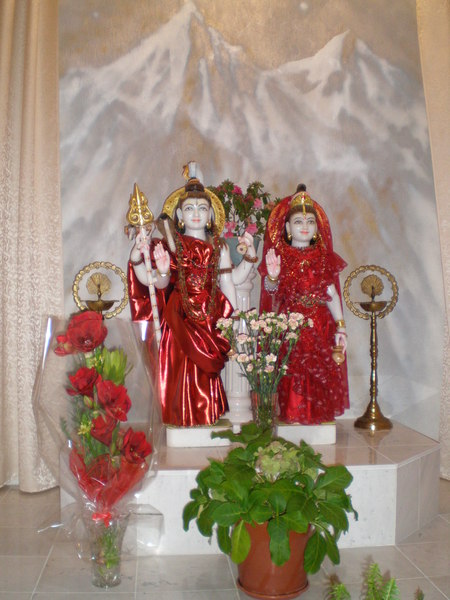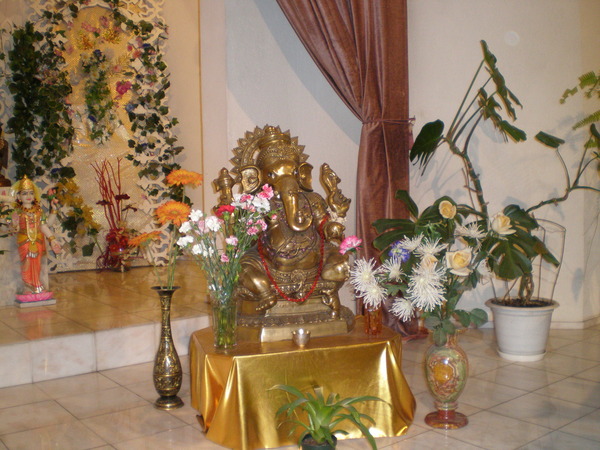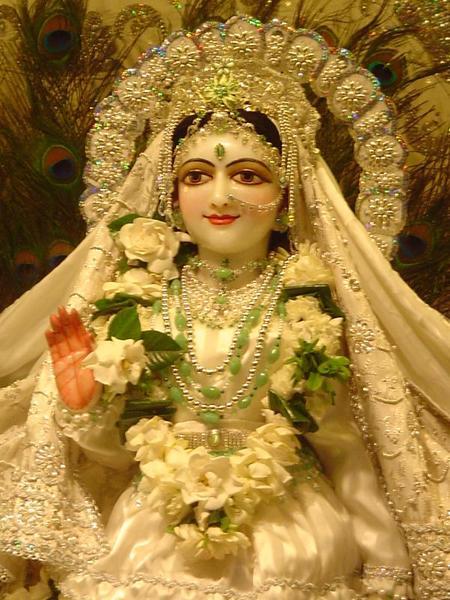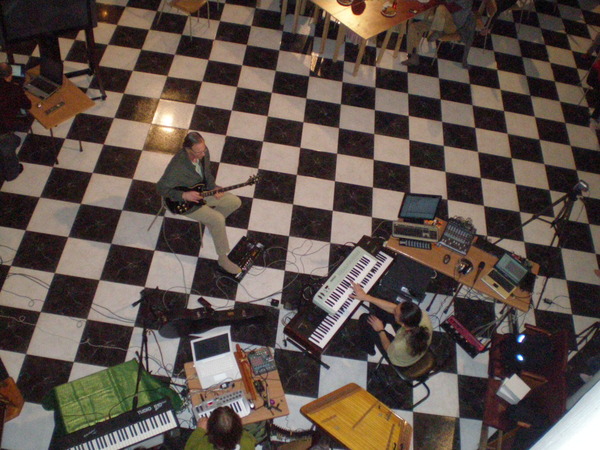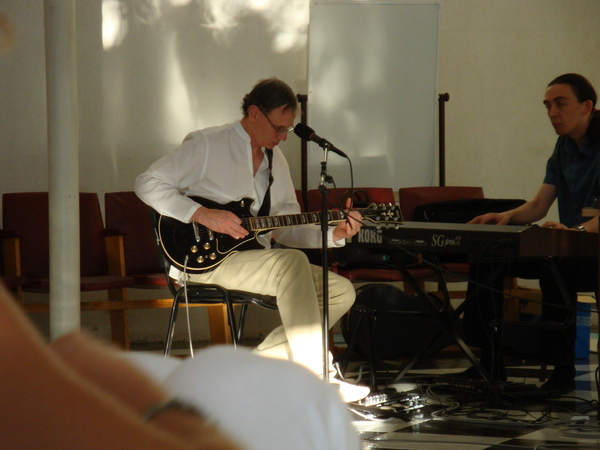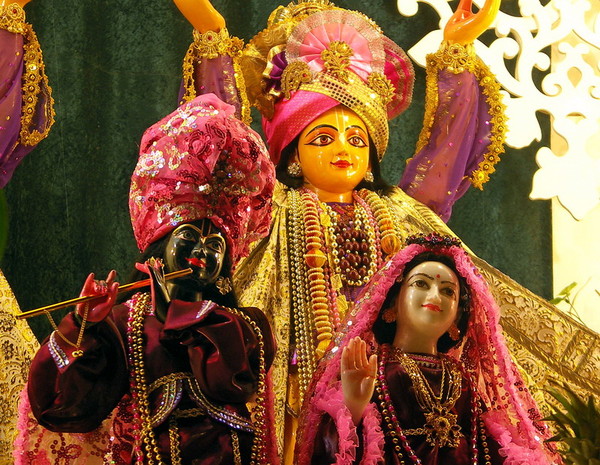 .
. ..Interview in St. Petersburg
Harsi: How you made it possible in this broadcasting to broadcast your lectures all over the world? I can imagine it is a great art to do it and a great task.
Hari:
..Interview in St. Petersburg
Harsi: How you made it possible in this broadcasting to broadcast your lectures all over the world? I can imagine it is a great art to do it and a great task.
Hari: I started broadcasting around 2004, I started in the middle of 2004. By the end of 2004 I have done some very preliminary kinds of broadcasting as tests. The difficulty being that I have an intercontinentaly situated translator, somebody who is on another continent. There is a lack (
of network interconnections) between continents and also the connection is not always working properly, so there is cut off or just dropouts. (
> Wiki: History of the Internet) And the first thing I had to do was find some kind of a video conferencing, or some kind of conferencing program that would compensate for that as much as possible. And Tom Grangent assisted me with the
TAConf program that he had (
grandgent.com/tom). But than the second problem was to make it in Stereo and to broadcast Video and Audio at the same time at different bit rates, so that people who only had dialup modems could listen and people who had vaguely reasonable broadband connections could also watch Video.
So this was requiring a lot of Hardware, a lot of Audio interfaces. I usually need three computers, two cameras and three Audio interfaces. Now I've gotten that much more much simplified due to the increase in technology and also the extreme power of the computer that I have. I still need two computers, one Windows computer, one Mac computer and so on... So technologically speaking it was about maybe a three month endeavor to work it all out. I have my own server which streams, so that was the first problem. The second problem was to feel a connection to the people who I was speaking to, because I didn’t see them. Now initially I had a couple of people connecting to me through TAConf, so I saw them vaguely, but they were little itsy bitsy images on a screen and it didn‘t really worked. So I stopped that after a while it didn‘t matter.
But when you are speaking to a camera and you have a disembodied audience, that’s an audience situated somewhere, you don’t know really who they are, you can only just vaguely feel sometimes what they might give you as feedback, it’s a very subtle experience. So learning how to speak to an audience that you are vaguely aware of, is quite an art. Maybe it's not such an art when you are doing it for TV and you already have a preconceived notion. But I do it live on the spot, I have vaguely some idea what I'm going to talk about, and I do it. It started of in a kind of stumbling kind of way. I mean the lectures weren’t so great and the translators were getting used to the idea of being in another continent and doing it. We by the time 2005 rolled around we were going pretty good. And we have all of the lectures, I mean most of them, sometimes there were bridges, but most of them are there on the Harimedia site from even the end of 2004 all the way up to the present day.
The other problem was in broadcasting every Saturday was to figure out something to say. I mean what do I say?! So, you run out of like, you need topics after a while. So you have to figure out how to say things in a way which is useful, it’s interesting, is something that the people will benefit from and something you are interested in personally. Because if what I’m talking about bores me, well, than I can’t speak about it. It’s to boring and I just give up and say ok, everybody go home. But, so I’ve managed to use my experience during the week, to use my realizations that I might have had, even in simple things, to come up with some kind of a topic which inspired me to a certain extent and than it would develop. So that worked out quite well, it’s even still working today.
And that’s basically the history up to this moment. I’ve broadcast not every week now. Well, I did it just recently, but I was broadcasting every other week, so that I thought that I could keep myself fresh, but I've broadcasted every week for the last five weeks and it didn’t bother me, all was OK. So I think I might just continue to do that, I'm not sure. I know that I’ll continue broadcasting, it’s easy to do now, it’s not a problem. It used to take me days and days and hours and hours to prepare for broadcast, because there were so many things which broke all the time. But now it’s not, it’s pretty steady an so I can just the night the day before practice it for ten minutes. And in the morning I just get up at eight. I start, get up means the server starts going around at eight o’clock and it takes me around 20 minutes to set it up now. And by the time I show up at ten everybody knows where to be and how to do it.
Previously I had to be text support too. I used to get hundreds of e-mails, “ I can’t connect what do I do?”, “The image is not working what do I do?”, I don’t have a clue what to do, what do I do?” So I set up a full explanation on Harimedia how to do it, and there is also another site called
bcastlive.com and in there is a mirroring of the text in Harimedia. It’s simply for telling you how to connect to the broadcast, it’s very simplified. So that’s basically it.

 .
. .Social Networking Site: Mail.ru - MyWorld@Mail.Ru - agent.mail.ru/en
.Social Networking Site: Mail.ru - MyWorld@Mail.Ru - agent.mail.ru/en .Siva Parvati of Sankt Petersburg
.Siva Parvati of Sankt Petersburg .Radha Krishna of Sankt Petersburg
.Radha Krishna of Sankt Petersburg
 .Siva Parvati of Sankt Petersburg
.Siva Parvati of Sankt Petersburg .Radha Krishna of Sankt Petersburg
.Radha Krishna of Sankt Petersburg